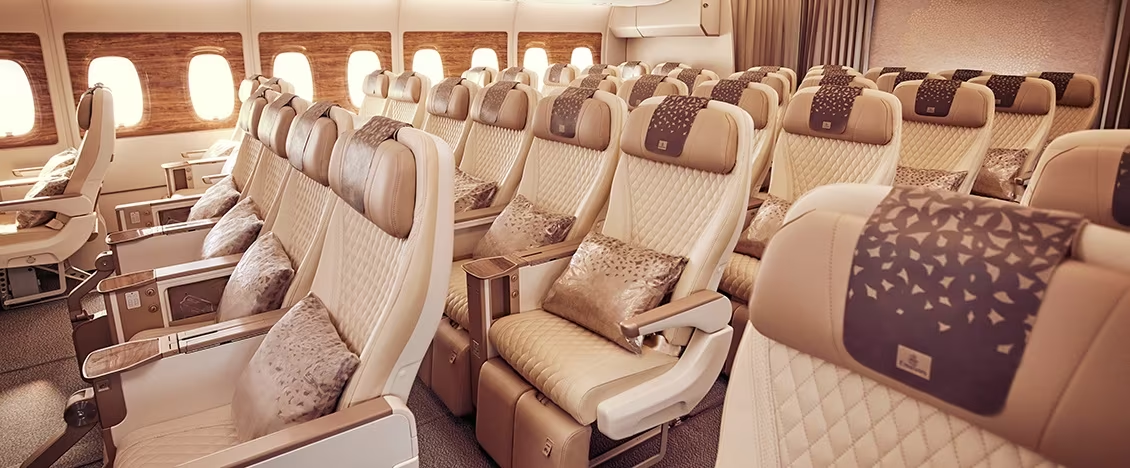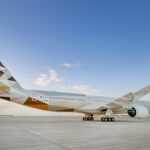Emirates revealed its Premium Economy cabin in August 2022, debuting the experience on select Airbus A380 flights from Dubai to London, Paris, and Sydney. The cabin provides a middle ground for passengers who desire a more luxurious experience than provided in Economy without the price tag of a Business Class seat. Despite criticism over its pricing—often labeled as controversial—the cabin continues to see high demand, frequently selling out on available routes. In response to this growing popularity, Emirates has announced plans to expand the Premium Economy offering across its fleet, rolling it out on additional aircraft and routes in the near future.

Between Economy and Business: Does Emirates’ Premium Economy Deliver?
Emirates aimed to achieve an entirely new class with Premium Economy, unlike most airlines that may just slightly improve their Economy experience. The entire experience is different from the moment passengers start packing until they land, this is first notable with higher baggage allowances. Emirates offers Premium Economy passengers 35kg of checked baggage, 10kg more than typically offered to those traveling in Economy.
The elevated cabin greets Premium Economy passengers with white leather recliners in a spacious 2-4-2 configuration on the A380. The wider seats offer up to 40 inches of pitch, 19.5 inches of seat width, and 8 inches of recline. While the seats don’t offer flatbed style like those in Business, the added space allows for a calf and footrest that significantly changes the game during long-haul flights.
Passengers will immediately notice the finer details, from the wood grain finishing on the tray tables to the easily accessible in-seat charging ports and a generous 13.3-inch HD screen – one of the largest in its class. Emirates’ award-winning ICE entertainment system is available in full, giving Premium Economy travellers access to over 5,000 channels of movies, TV shows, music, and games.
Another significant upgrade from Economy is the elevated dining experience. Meals are served on chinaware with stainless steel cutlery, accompanied by a curated selection of wines and beverages. Premium Economy passengers are entitled to a Chandon sparkling wine, extra vintages from the Business Class menu, as well as numerous liquors (and a selection of chocolates). The menu itself features regionally inspired dishes, often changing monthly to appeal to frequent flyers. It’s a dining experience that feels closer to Business Class than Economy, and it adds to the overall sense of thoughtful luxury.

The Downsides of Premium Economy
While Emirates Premium Economy significantly improves the flyer’s experience well beyond standard Economy, it still has its limitations and downsides that must be evaluated by passengers before committing to a seat. One of the most common critiques revolves around pricing. Although more affordable than Business class, Premium Economy can still be considerably more expensive than Economy – sometimes by as much as double. Price is always an important aspect when booking flights, especially for shorter routes, so the experience may not be as valuable. The idea of spending more money on a flight may be distressing in some individuals’ minds, especially when Emirates Economy class is still considered a premium in itself.
The Premium Economy ticket has no access to Emirates’ airport lounges, nor any alternative lounge. The experience also lacks a sense of boarding priority as oftentimes both Premium Economy and Economy can board the aircraft simultaneously. Lastly, the 2-4-2 configuration may be difficult for those seated in the middle of the cabin, getting up during the flight can still require a neighbour, a downside that was tackled in the 3-seat middle-row business class.
What do you think about Emirates Premium Economy? Let us know below!










Good product for long haul ,pity about the middle seat situation
If Emirates wanted to have a TRULY Pemium Economy, this would be 2-2-2 with slightly wider seats and match (or surpass JAL’s 42” pitch. I’d pay for that 🙌
It can be a good experience
Instead of offering these service only in Europe and Far east And Australia sector they should offer Premium Economy at North America sector too like Toronto Miami NewYork etc